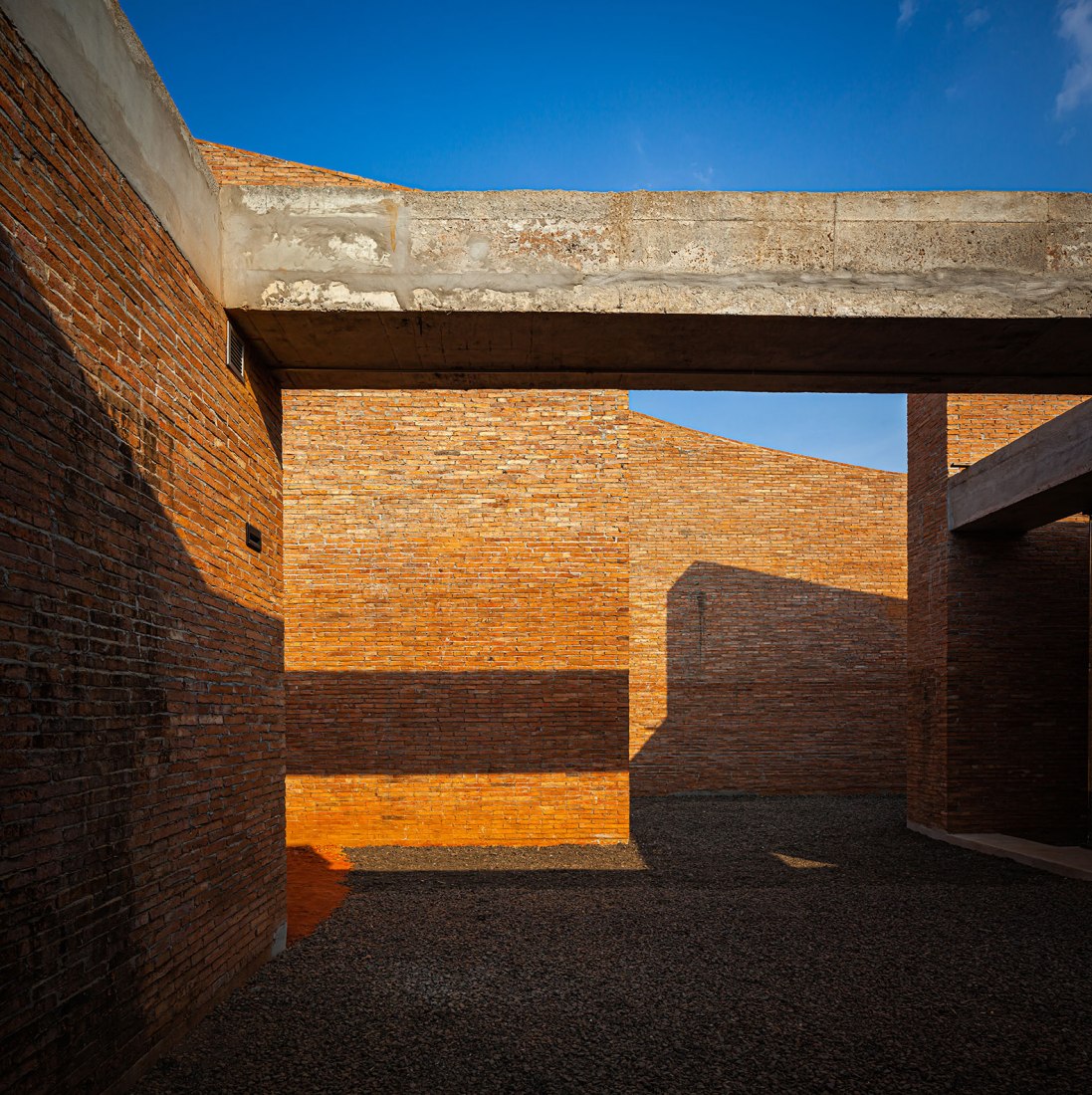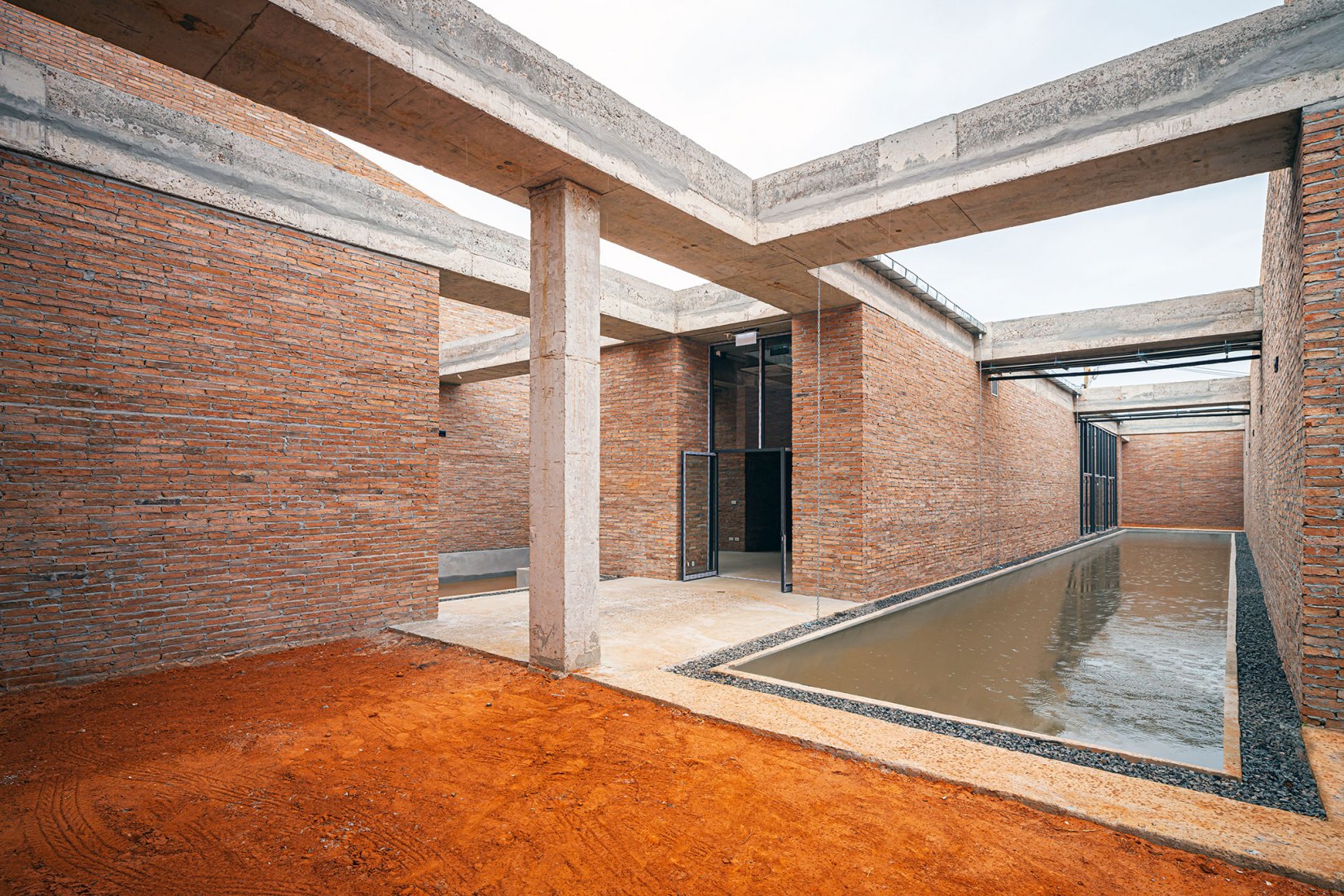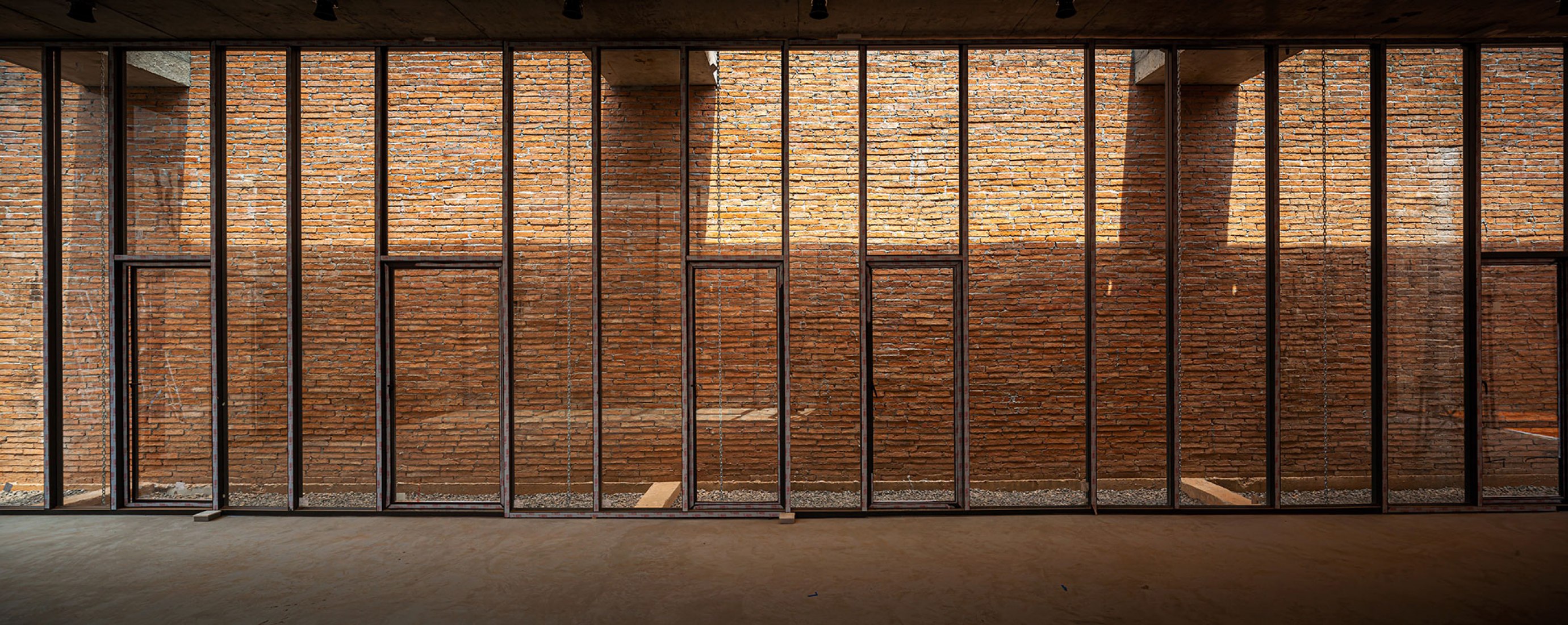More than 480,0000 fired clay bricks are made by hand from the loam found in the area. Employing technique that has been handed down from generation to generation, construction creates jobs and income for locals while increasing the value of often-overlooked local material.
Brick walls of various heights overlap each other as you move inside. Each side of a room is surrounded by patios of different sizes and shapes.
Blurring the boundary between outside and inside: With different sizes and shapes of patios and rooms, the exhibition could be held outdoors or indoors. It not only exhibits artifacts related to the ancestral culture of the Kui but the architecture of the museum. it also embodies the soul of the Kui and their elephants.
Description of project by Bangkok Project Studio
Elephants have a special status in Thailand. They are part of grand royal ceremonies and were war animals for Kings throughout the country’s ancient history. In addition to being respected, the relationship between elephants and Thai people are unique—being treated as family members rather than pets or labor. The bond is perhaps strongest in the village of the ethnic Kui in Surin province, north-eastern Thailand. For many centuries, the community has lived with elephants that their ways of life, from birth to death, can hardly be separated.
Once lush greenery, the forest of Surin was destroyed in favor of cash crops in the last half-century. The Kui and their elephants suffered extreme droughts, shortages of food and medicinal plants the forest once provided. Deprived of sustenance, the two displaced to tourist towns begging for food or working in elephant camps, some with unsuitable living conditions.
Elephant Museum is part of Elephant World, a project initiated by the local government to bring the two back to their homeland and to ensure the suitable living conditions for the elephants. Not only showcasing objects, but the museum shall also portray the voice of the villagers and more than 200 elephants living here—of their long-established familial relationship disapproval of the cruelty of animal exploitation, and of their hope for the future.
Amidst the vast treeless landscape, curved walls at varying heights sprout from the ground, seemingly opening the building up to visitors of an elephant’s size. The walls slope and cross one another, revealing gaps that lead visitors to the inside.
Courtyards of different shapes and sizes open up from the four exhibition galleries. Some are filled with small pools, some with reddish earth just like the landscape outside. Different scales of outdoor paths, sheltered space, and open courtyards, recall elements of the area: from elephants, humans, their houses, the ponds they both bathe, to the dirt bath the playful elephants enjoy.
Portraying life under the sun, sunlight is an essential element in the design. Rooms and paths are brightly lit by sunlight in certain areas and dimmed in others. The effects change throughout the day, depending on the angle of the sun. Exhibitions may happen in the courtyards or on exterior walls. And inside the galleries, one may only find seats to rest and look out at the content displayed outside while reflecting on the coexistence between the two species.
Over 480,0000 fired clay bricks are made by hand from loam found in the area with the technique that has been passed down through generations. In the town where there are not many job opportunities, the construction process creates jobs and income for the locals while increasing the value of the often-overlooked local material. After decades of struggling away from home, the museum shall empower the Kui, the elephants, and the people of Surin. Its program and the building process shall encourage them to take pride in their heritage, and restore the dignity of their beloved elephants once again.






































